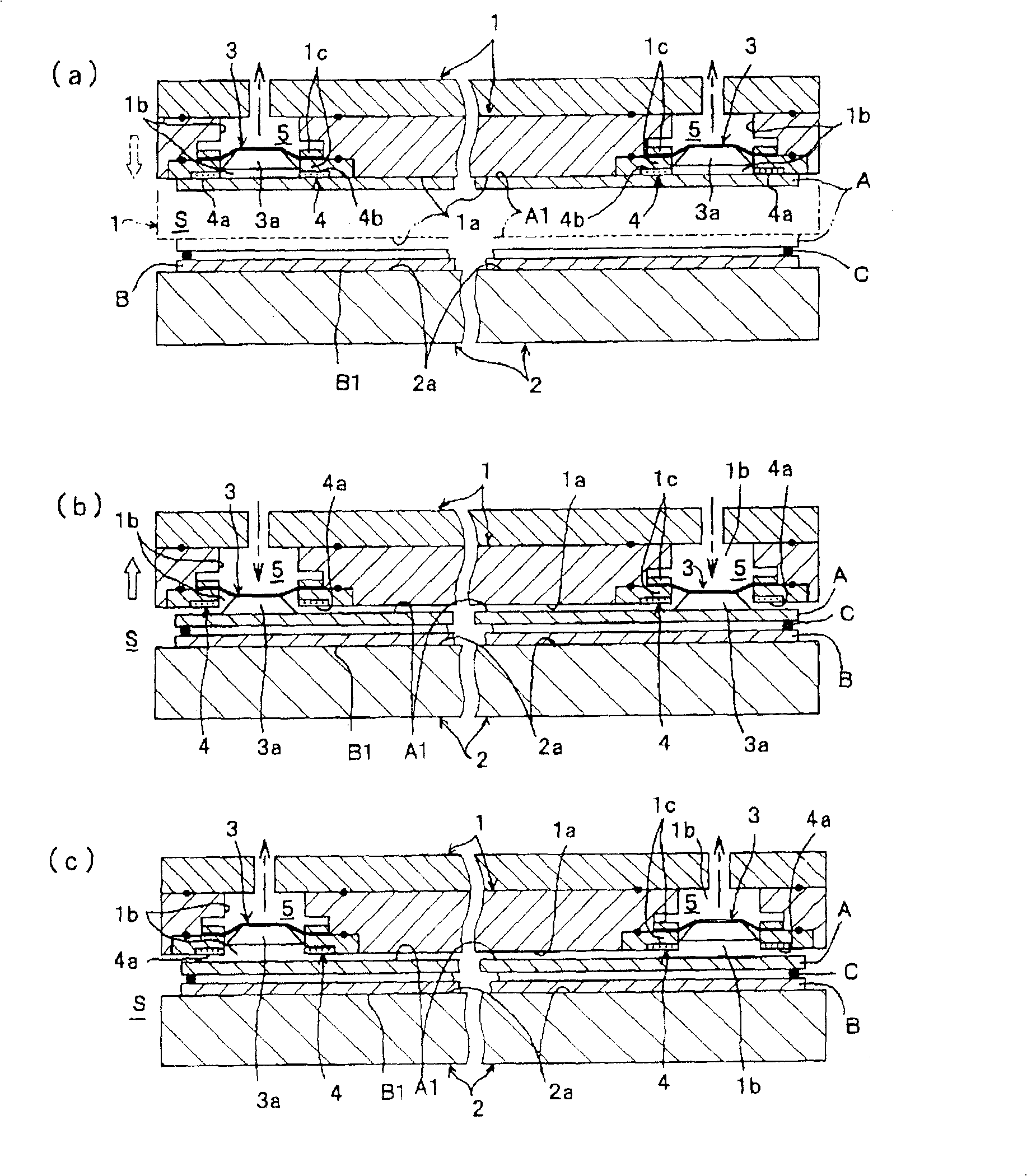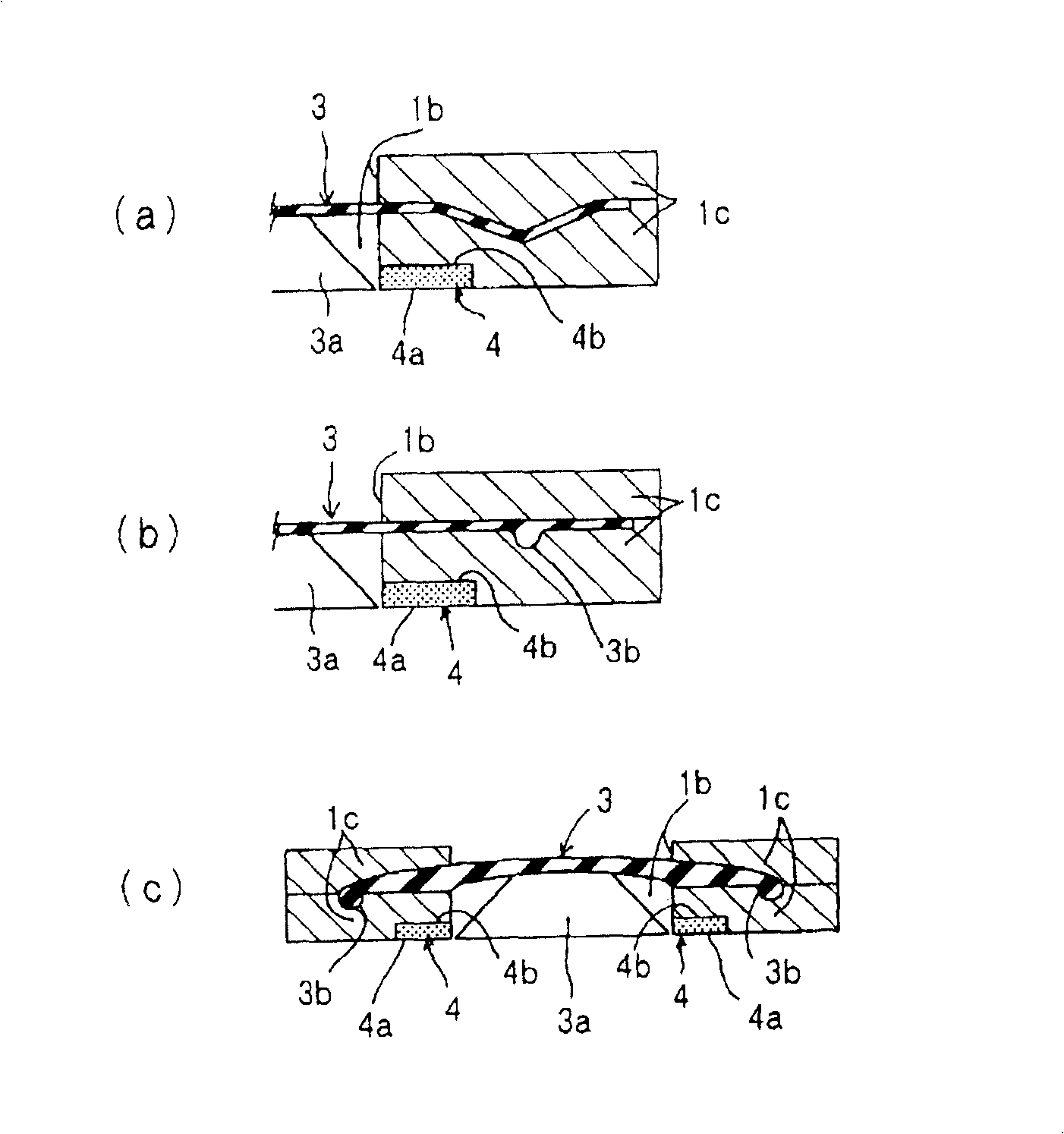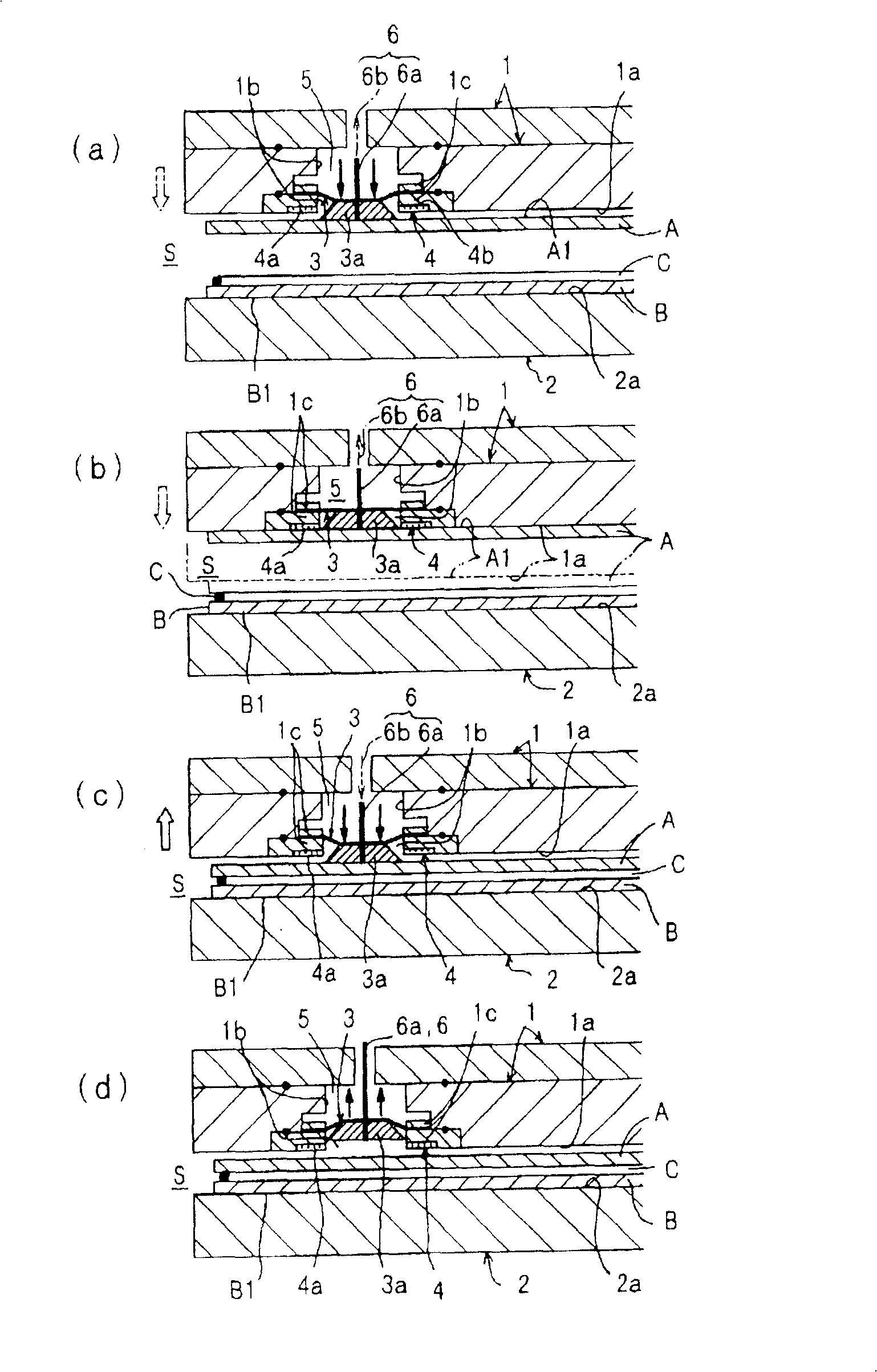Adhesive chuck device
A chuck and substrate technology, used in identification devices, nonlinear optics, instruments, etc., can solve problems such as increased manufacturing cost, high failure rate, glass plate damage, etc., to avoid the danger of influence or discharge, and the failure rate. Reduced, Safe and Correctly Aligned Effects
- Summary
- Abstract
- Description
- Claims
- Application Information
AI Technical Summary
Problems solved by technology
Method used
Image
Examples
Embodiment 1
[0112] The embodiment 1 as figure 1 As shown in (a) to (c), the following cases are shown, that is, a plurality of openings 1b are opened only on the holding surface 1a of the upper holding plate 1, and the outer peripheral portion of the movable film 3 is supported. Part of the rigid body portion 3a is provided facing the surface A1 of the substrate A, and at the same time, the ring-shaped adhesive member 4 is fixed along the opening edge of each opening portion 1b located on the secondary side of the movable film 3, and the rigid body portion 3a is attached to the rigid body portion. In the state where the part 3a moves upward and enters the opening part 1b, the bonding member 4 is brought into contact with the upper substrate A and bonded and held. The underside protrudes and deforms, and the substrate A bonded and held on the bonding surface 4a of the bonding member 4 is forcibly peeled off.
[0113] In addition, in the illustrated example, due to the spatial relationshi...
Embodiment 2
[0140] The embodiment 2 as image 3 As shown in (a) to (d), there is provided an air passage 6a penetrating in the reciprocating direction of the movable film 3, and a gas supply source 6b for supplying gas such as nitrogen gas by vacuum suction from the air passage 6a. When the upper substrate A is installed, the vacuum suction mechanism 6 performs vacuum suction from the air channel 6a of the vacuum adsorption mechanism 6 to absorb and hold the upper substrate A, and then when peeling off from the adhesive member 4 as required, upwards from the air channel 6a. The surface A1 of the substrate A ejects gases such as nitrogen, and this structure is the same as the above-mentioned Figure 1 ~ Figure 2 The illustrated embodiment 1 is different, and the other configurations are the same as those of the first embodiment.
[0141] In the illustrated example, an air passage 6a is perforated so as to pass through the movable membrane 3 and the rigid body part 3a provided on a part th...
Embodiment 3
[0150] The embodiment 3 as Figure 4 As shown in (a) to (c), the fixing position of the above-mentioned bonding member 4 is not provided on the opening edge of the opening 1b, but is changed and provided on the rigid body part 3a protruding from the central part of the movable membrane 3. At the same time, through the pressure difference between the primary side space (pneumatic chamber) 5 and the secondary side space (closed space) S of the movable membrane 3, on the bonding surface 4a of the bonding member 4 and the holding surface 1a The upper substrate A is brought into contact with the bonding surface 4a of the bonding member 4 to be bonded and held in a substantially flat or slightly (about 100 μm) convex state, and the movable film 3 is directed toward the primary side The space (pneumatic chamber) 5 deforms upward to enter the opening 1b in a concave shape, thereby forcibly peeling the bonding surface 4a of the bonding member 4 from the upper substrate A. This structur...
PUM
 Login to View More
Login to View More Abstract
Description
Claims
Application Information
 Login to View More
Login to View More - R&D
- Intellectual Property
- Life Sciences
- Materials
- Tech Scout
- Unparalleled Data Quality
- Higher Quality Content
- 60% Fewer Hallucinations
Browse by: Latest US Patents, China's latest patents, Technical Efficacy Thesaurus, Application Domain, Technology Topic, Popular Technical Reports.
© 2025 PatSnap. All rights reserved.Legal|Privacy policy|Modern Slavery Act Transparency Statement|Sitemap|About US| Contact US: help@patsnap.com



